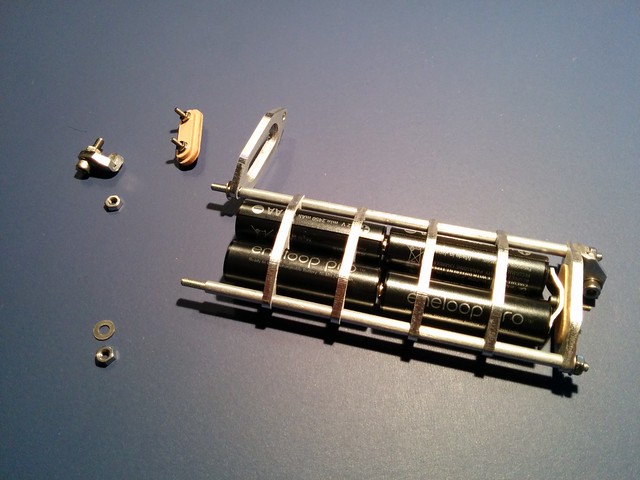Lithium-ion Battery Gauge-Measuring Instrument Introduction
Sep 05, 2019 Pageview:1640
A battery charge status indicator, which is also known as battery gas gauge, is needed to determine the state of charge (SOC) of a battery, as well as the state of health of the battery. The battery fuel gauge IC can predict how long the battery can provide power under certain operating conditions. Insufficient battery life, as well as unreliable charging routines, are some of the very common complaints with battery-powered devices. Extremely accurate gauges of batteries are required to avoid unexpected shutdowns and are essential for positive user experience.
Many people consider batteries as a form of energy storage, similar to a fuel tank providing liquid fuel. For the sake of simplicity, a battery can be considered as such; however, the measurement of the energy stored by an electrochemical device is much more complex to measure. The process is confused, misunderstood and this article tries to describe the challenges of measuring the energy stored in a battery.
Before analyzing the concept of a fuel gauge idea deeper, it is assumed that the state of charge is the relative energy stored in a battery which can be released under given conditions. These prevailing conditions are largely unknown to the battery user, and besides, the SoC includes the actual battery capacity, the charging currents, as well as the operating temperature. The state of function (SoF), is an all-encompassing criterion which includes SoC, as well as capacity and delivery, and they are difficult to measure and usually remain guesswork. Given these limitations, you can understand why most battery charge or battery gauge indicators are not accurate.
How does a lithium-ion battery gauge work?
The life of a battery can be difficult to measure, and surely cannot be determined solely by the number of cycles or their age alone, but mainly by their usage (or their misusage). With decreasing capacity, the runtime of a battery gets shorter.
Although the displayed SoC information on batteries or the display screen of the battery is useful to the user, reading does not always guarantee battery life. The fuel gauge always returns to 100% when the battery is fully charged, regardless of the battery capacity or how much energy it can store.
A serious confidence error occurs when a very old battery displays a 100% SoC, while the capacity of the battery to maintain in its charge or energy stored has been reduced to 50% or less. For example, if 100% of a good battery has a 4-hour battery life, a medium capacity battery will only work for 2 hours on 100% charge. Most users are not aware that the fuel gauge only shows the battery SoC and not the capacity of charge a battery is holding. The capacity of a battery, which is the most important health indicator, has remained unknown.
In addition to the use of a controlled discharge battery (to know the health of a battery), there is almost no reliable way to know the capacity of a "chemical battery", but there is one way to read "digital batteries". The term "chemical battery" is used to refer to the actual capacity obtained by discharging a fully charged battery, while the digital battery is a peripheral monitoring circuit which stores the estimated capacity resulting from the Coulomb counting as a battery charges and discharges.
Battery Management and Gauge Types
There are many types of battery management ICs, which perform various functions of battery management. One of the most common management functions is battery charging. Battery charging controllers are available for nearly all types of rechargeable batteries. These ICs can simplify tasks like detecting when external power is present, supervising current flow into the battery, monitoring charge capacity, determining a safe temperature and voltage levels as well as many other tasks. Integrating a battery management IC into a design can significantly reduce the complexity and component count of a battery-powered system.
A battery fuel-gauge is an intelligent device that can provide information such as state-of-charge (SOC), available charge (in mAh or mWh), battery run time (in minutes), and battery state-of-health (SOH). One point of confusion is that there are many types of “fuel-gauges” that are no more than a battery monitor. A battery monitor simply reports battery voltage, charge and discharge current, and battery temperature. It usually incorporates a coulomb counting analog-to-digital converter (ADC) to track charge. A battery monitor can’t accurately report the actual battery remaining capacity without a sophisticated gauging algorithm.
Gauge Standard and Battery Charge Accuracy
Ideally, fuel gauges in battery pack assemblies measure the level of remaining capacity in a battery under all conditions. A battery fuel gauge is much more complex that a fuel gauge in a car for example. In a car, the gas tank always remains the same size regardless of temperature, the age of the car, or how fast the gas is being consumed. The tank size always remains the same and the float gauge is always accurate.
In a battery, the capacity "size of the tank" is always changing with temperature, aging, and at the rate of energy consumption, and even the type of chemistry used. To be able to calculate the remaining capacity in a battery, all of these factors must be accounted for. If any variable is ignored, the gauge becomes less accurate.
Depending on how the readout information will be interrupted and what type of application the battery will be used in, a less accurate fuel gauge may be sufficient.
- Prev Article: Lithium ion battery demand-What you need to do
- Next Article: Lithium Ion Leisure Battery – How to Depose
Leave Message
Hottest Categories
-
Hottest Industry News
-
Latest Industry News











